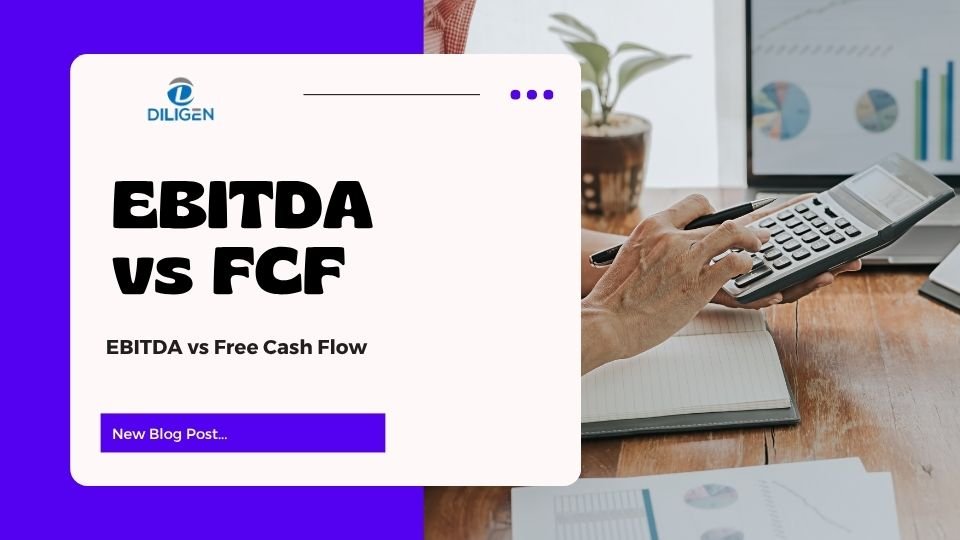EBITDA vs Free Cash Flow: Understanding the Real Value of Your Business
Introduction:
When analyzing a company’s financial performance, two key metrics often come into play—EBITDA (Earnings Before Interest, Taxes, Depreciation, and Amortization) and Free Cash Flow (FCF). While both are widely used by business owners, investors, and financial analysts, they serve very different purposes. Understanding the distinction between these two metrics can significantly improve your ability to assess a company’s health, profitability, and long-term sustainability.
Let’s explore each concept in detail and then dive into how they compare and why both matter in financial decision-making.
✅ What Is EBITDA?
(Earnings Before Interest, Taxes, Depreciation, and Amortization)
To start with, EBITDA is a non-GAAP (Generally Accepted Accounting Principles) metric that focuses on a company’s core operating performance. By removing variables like interest, tax, and non-cash expenses such as depreciation and amortization, EBITDA offers a “cleaner” view of how profitable the business is before external financial influences come into play.
🔹 Formula:
EBITDA = Net Income + Interest + Taxes + Depreciation + Amortization🔹 Why It’s Useful:
Easier Comparison: Since it excludes accounting differences, EBITDA makes it easier to compare companies across different sectors or regions.
Focus on Operations: It highlights the raw profitability of the business, without the effects of financing structure or tax strategy.
Valuation Metric: Frequently used in mergers, acquisitions, and business valuations to determine how much a company is worth.
However, it’s important to note that EBITDA is not a measure of actual cash flow. It may paint an overly optimistic picture if capital expenditures or debt repayments are high.
💰 What Is Free Cash Flow (FCF)?
Now, moving on to Free Cash Flow, this metric represents the actual cash a company generates after accounting for its operational and capital spending. It reflects the money available to reinvest in the business, pay dividends, reduce debt, or simply build reserves.
🔹 Formula:
Free Cash Flow = Operating Cash Flow – Capital Expenditures🔹 Why It’s Important:
Real Cash Indicator: Unlike EBITDA, FCF tells you how much money the company really has in hand after essential investments.
Financial Flexibility: High FCF indicates that the company can support growth, pay dividends, or reduce debt—making it attractive to investors.
Risk Assessment: If FCF is consistently low or negative, it could mean the business is not generating enough cash to sustain itself.
🔄 EBITDA vs Free Cash Flow: Key Differences
| Feature | EBITDA | Free Cash Flow (FCF) |
|---|---|---|
| Type | Accounting measure (non-cash) | Actual cash measure |
| Focus | Operational efficiency | Liquidity and financial health |
| Includes CapEx? | ❌ No | ✅ Yes |
| Used For | Valuation, profitability comparison | Cash analysis, investor decisions |
| Reliability | May be misleading if CapEx is high | More realistic and transparent |
💡 Which Metric Should You Trust More?
Both metrics serve valuable but different purposes:
Use EBITDA when comparing businesses in similar industries, especially if you’re looking at profitability from core operations.
Rely on FCF when you want to understand how much cash the business really has to reinvest, pay down debt, or reward shareholders.
That said, EBITDA can be easily manipulated by management through accounting choices or aggressive reporting. On the other hand, Free Cash Flow is harder to distort and usually gives a truer picture of financial strength.
🔍 Real-World Scenario: Tech Startup vs Manufacturing Firm
Let’s say:
A tech startup has low physical asset costs, high EBITDA, and positive FCF.
A manufacturing firm has high EBITDA but negative FCF due to heavy machinery investments.
In this case, while both appear profitable on the surface, only the startup is generating cash after spending on growth. The manufacturing firm may struggle to meet its debt or fund expansion—despite its high EBITDA.
🧾 Final Thoughts
In conclusion, EBITDA and Free Cash Flow are not interchangeable—and understanding the difference is crucial for smart financial analysis. EBITDA showcases operational performance, while Free Cash Flow reflects actual financial strength and sustainability. Evaluating both together gives a complete and reliable picture of business health.
Whether you’re preparing for an investment round, evaluating acquisition opportunities, or simply striving for better financial clarity, having the right experts by your side makes all the difference.
Diligen’s professional experts will take care in every crucial way—ensuring your business metrics are not only accurately interpreted but strategically used to drive informed decisions and sustainable growth.





